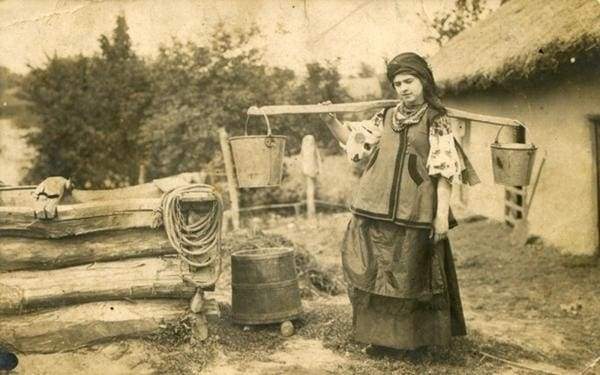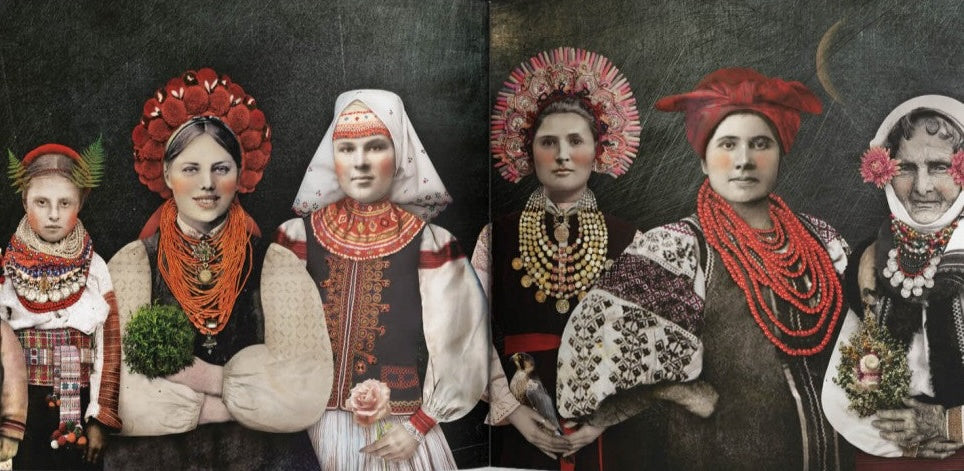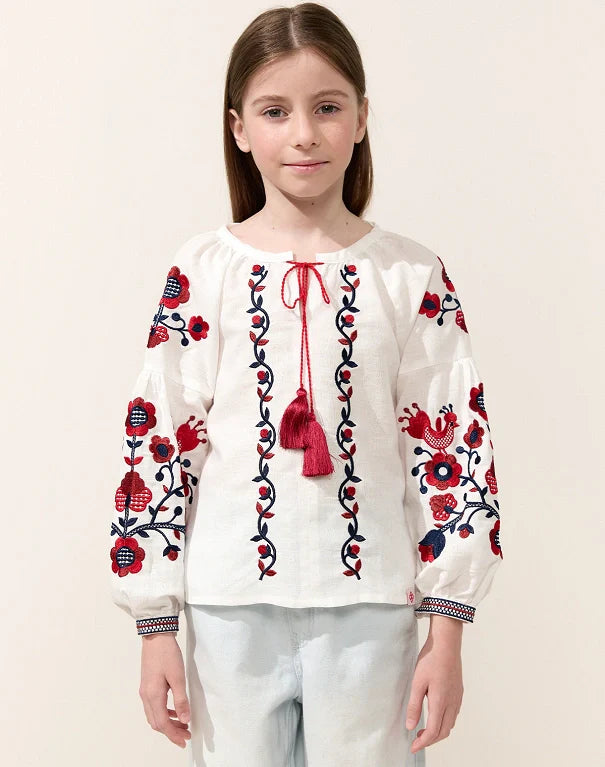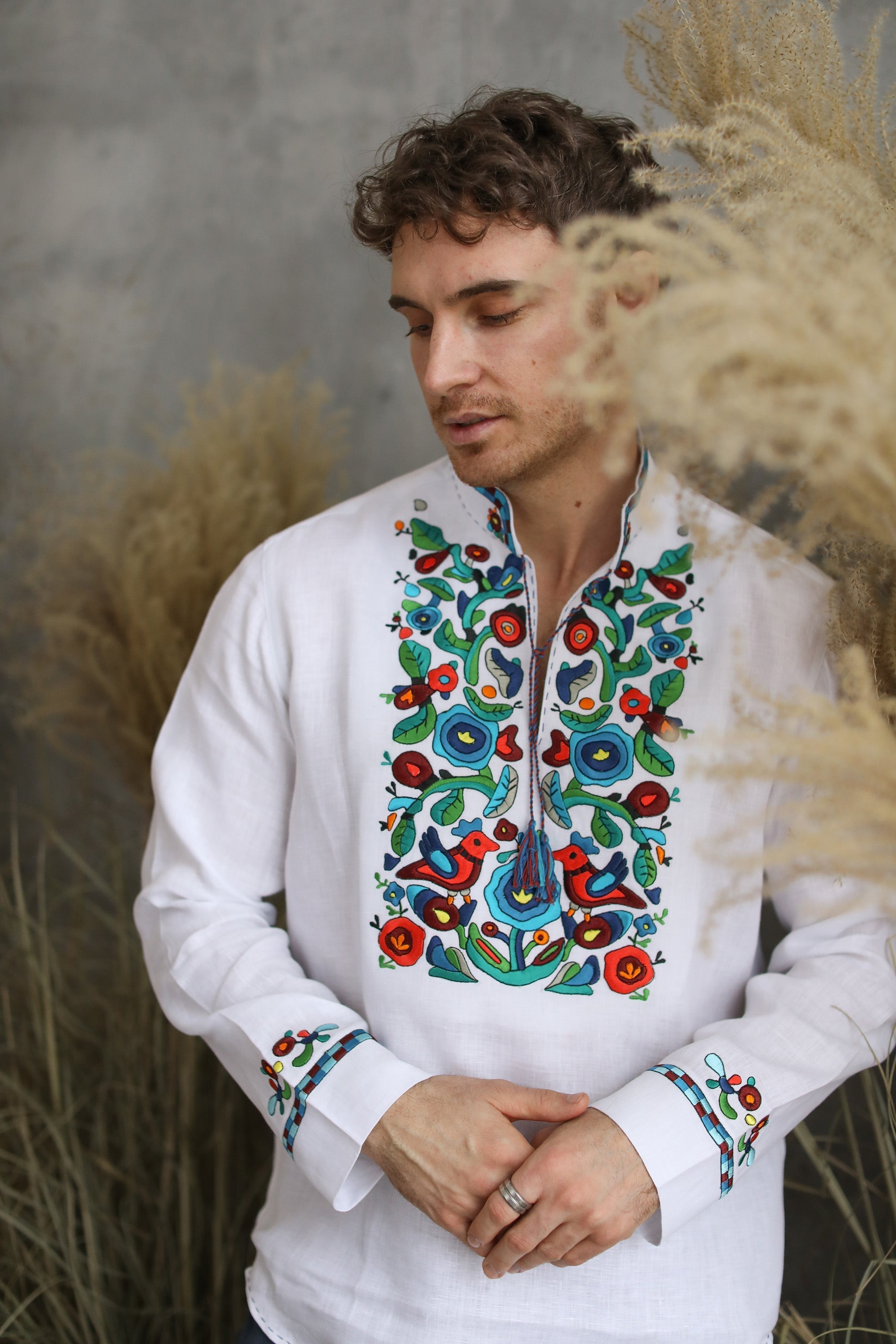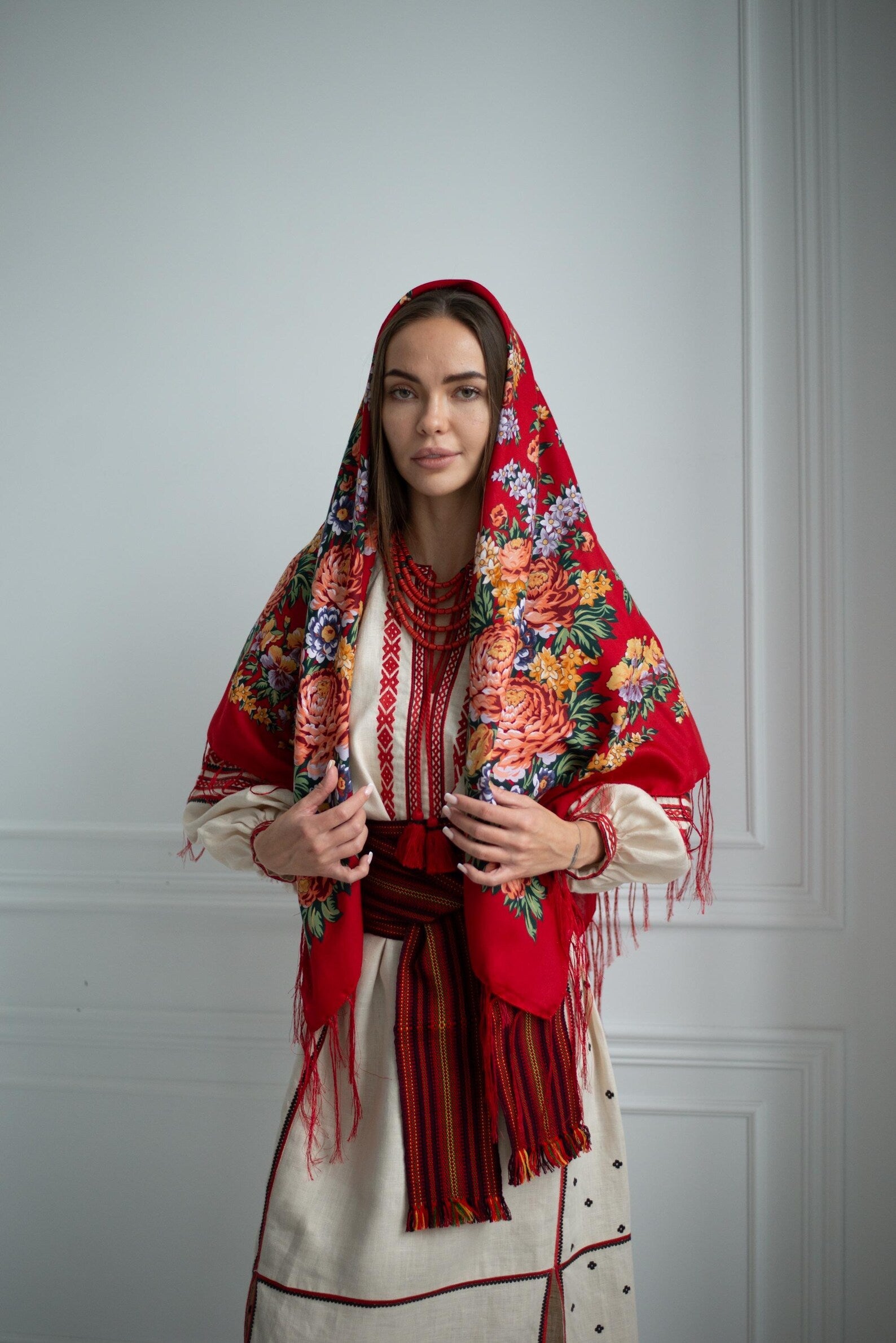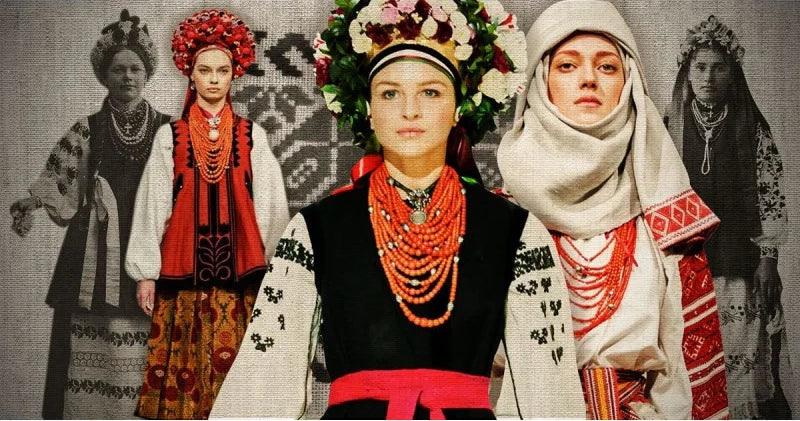
The Evolution of Ukrainian Embroidery
Ukrainian embroidery, particularly in the context of the vyshyvanka, has evolved significantly over the centuries, reflecting changes in Ukrainian culture, society, and historical events. Here's a detailed overview of its evolution:

Ancient Origins
Trypillian Culture and Scythians: The earliest evidence of embroidery in Ukraine dates back to the Trypillian culture in the late Neolithic era and the Scythians, who lived in the region from the 5th century BC. Embroidery was initially used for practical purposes, such as reinforcing seams, and later became symbolic, protecting against evil spirits.
Kievan Rus' Period (10th-12th centuries)
Luxurious Embroidery: During Kievan Rus', embroidery became more refined, using gold and silver threads. It adorned the clothing of nobility and clergy, and was also used in temple decorations. Ordinary people used red and black threads for their embroidery.
Symbolism and Motifs: Embroidery motifs included flowers, animals, and geometric figures, often telling stories or conveying symbolic meanings.
Cossack Era (17th century)
Modern Features and Symbolism: During the Cossack period, Ukrainian embroidery began to acquire its modern features. The vyshyvanka became a symbol of national identity and a talisman for soldiers, believed to possess healing properties.
Regional Variations: Patterns varied by region, each carrying specific meanings and reflecting local traditions.
19th Century
National Revival: As part of the Ukrainian national revival, embroidery became a powerful symbol of cultural identity and resistance against Russian dominance. It was worn as a political statement to assert Ukrainian independence.
Urban Influence: By the late 19th century, Ukrainian embroidery began to influence urban fashion, especially in Galicia, making it accessible to the middle class.

Soviet Era
Decline and Diaspora: During the Soviet period, traditional Ukrainian embroidery fell out of favor due to its association with nationalism. However, Ukrainian diaspora communities continued to preserve the tradition.
Shirts That Have Healing Power
For thousands of years, Ukrainians have adorned their clothing with embroidery.
By the 11th century, there was a school founded by the Grand Prince of Kyiv, Volodymyr Monomakh's sister, Hanka, where the art of embroidery with silver and gold was taught.
At the age of seven, a girl began to embroider articles for her hope chest. Through her process of creating dozens of shirts, ceremonial cloths, table cloths with yarn, silver, gold, beads, and spangles, she would master the art of patience, harmony of composition, concentration, and therefore the ability to steer the course of her own life. The number of embroidered works in her hope chest would be the measuring stick of her work ethic.
Embroidered shirts were treasured heirlooms, handed down by a family from generation to generation. A richly embroidered shirt would be made for a woman's marriage ceremony, worn throughout her life, and she would be buried in it too. It would be worn in times of illness as it was believed to have healing powers.

Shirts white on white
Their opulence is easily overlooked; they are jewels of the finest filigree. Appreciation for them comes from more than a passing glance - they need to be carefully and closely examined for their nature-bound geometry. The longer you gaze, the more the shirt reveals its mastery and majesty ... and as it dœes a you begin to fall in love.

It took three to six months of daily work hours, upon hour of meditation, contemplation, and mastering techniques to complete an embroidered shirt.
There are hundreds of stitches, methods and techniques...like (with exact or close translations) perevir (weaving stitch), shtapivka (double running stitch), hlad priama, lyshtva (straight or slanted satin stitches), skisna and koloskova (padding stitches), nyzynka poperechna, pozodovzhia (highly stylized darning stitches, embroidered from "the wrong side" of the shirt), pozad holky (a type of twisted stitch), sosnivka (interweaving), stebelevyi shov, and tamburnyi, (stem stitches), and also zanyzhuvannia (another satin stitch), poverkhnytsia and kafasor (surface stitches), zernovyi vyvid (double fagot stitching), solov'ini vika and vivsianochka (combining drawing and weaving), zolotianka (embroidering with gold thread)...

And that doesn’t count the techniques of vykoloiuvannia (combination of many), vyrizuvannia (cut work), obmetuvannia (edge stitching), merezhennia, and rubtsiuvannia (drawn thread work). And then there would be the regional "know-how” to master, such as the Horodok stitch (Lviv Region), or the smocking technique of the Boiko region.
Post-Independence (1991 onwards)
Modern Revival: Following Ukraine's independence, there was a renewed interest in traditional Ukrainian culture, and embroidery once again became a symbol of national pride.
Contemporary Fashion: Modern designers incorporate traditional embroidery into contemporary clothing, blending old and new styles. This fusion has gained international recognition, with global fashion brands incorporating Ukrainian motifs into their collections.
Contemporary Era
Global Influence: Ukrainian embroidery is now celebrated globally, with its intricate patterns and symbolic meanings influencing fashion worldwide.
Experimentation and Innovation: Designers continue to experiment with new materials, colors, and motifs, ensuring that Ukrainian embroidery remains vibrant and relevant in modern fashion.




You can also read more information in our book, Ukrainian Treasures The Hope Chest. Ukrainian Treasures.

Please go shopping for Ukrainian embroidered shirts in our store.


